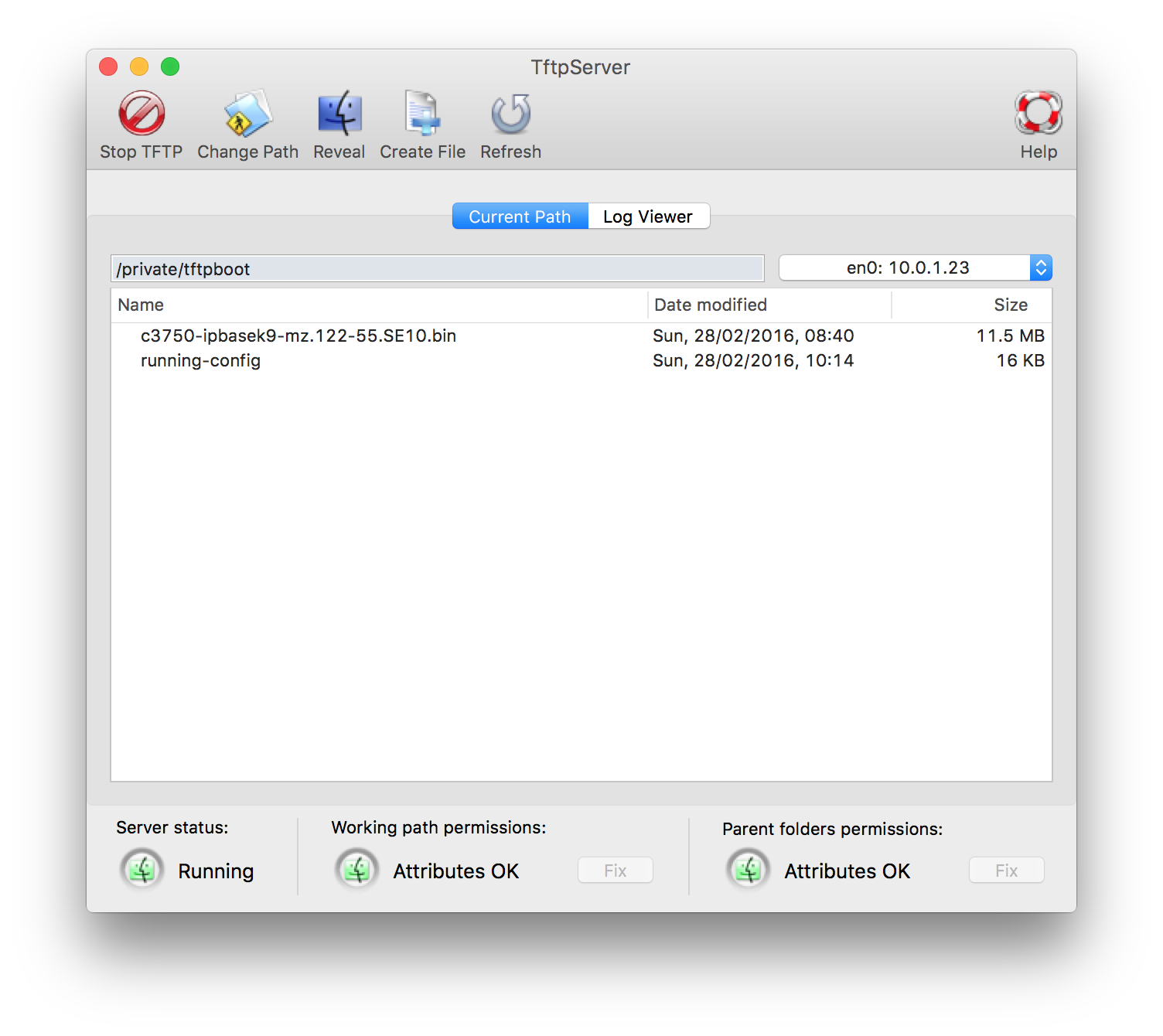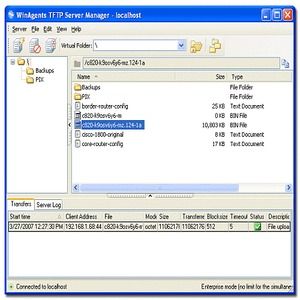
The below article mainly advises on the first mode of recovery, i.e. many Netgear routers, run a TFTP server in recovery mode, and you need to upload the firmware to the device using a TFTP client.
#Load tftpserver ... download
Other devices do not have automatic pull function and they need you to manually TFTP copy commands in recovery mode to download the firmware via TFTP and initiative the install. Some devices then will automatically pull the network-provided firmware file over TFTP network protocol to the OpenWrt and hopefully recover with a successful emergency flash process.

Then device with the broken firmware then has to be started up in TFTP recovery mode. There are two potential modes of operation:įor many routers, the recovery process requires you to host the firmware image on a TFTP server on your computer. In case of a failed flash process or in case of a misconfiguration, the device's boot loader usually remains untouched and can therefore be used to reflash the firmware and recover the device. On most devices, the vendor provides a boot loader on a discreet partition that is untouched by firmware updates. If you keep TFTP-Server running or if you keep the TFTP-client tool available to run anytime, then abusive hackers can abuse/exploit it, to load harmful firmware and/or to change sensitive security settings inside your existing router firmware 1, 2, 3, 4, 5, 6, etc. The final link that lead me to discover the process of allowing uploads.(frwl rule # 3) TFTP traffic is Not-Allowed when originated from Internet-ip-address (aka: NON private- LAN ip-address ranges)Īnd you must also make sure to do this: after your develop / troubleshooting etc work is done or when you pause to goto other work, then make sure the TFTP-server and TFTP-client both are completely disabled in your OS/distro : turn off TFTP-Server service / process, disable TFTP-server startup script file, and move the TFTP-client ( tftp) & the TFTP-server ( tftpd) executable / binary ( bin) files out of all folders mentioned in your PATH variable, into a different folder (which is NOT in the PATH variable), and also move bin files out of the folder which is mentioned in startup-script (if such is used). The first "how to" that I used to go through this process. man tftpdĪn external links section can be used to point users towards general information about the subject matter of the page, such as a wikipedia entry or project homepage. Tftpd-hpa seems to be somewhat tied to traditional tftpd.

sudo service tftpd-hpa restartĪt this point you should now have a TFTP server that allows you to both download and upload files. This can be accomplished by performing the following command. To make the changes take effect, the tftpd-hpa service must be restarted. If you want to be able to upload to that directory, then perform the following command. The root directory where files must be stored in order to access them via TFTP is /var/lib/tftpboot. Modify Permissions on TFTP Root Directory TFTP_OPTIONS="-secure"Īnd save the file and exit the vi editor. sudo vi /etc/default/tftpd-hpaĪnd change the line that reads. Then, edit the tftpd-hpa configuration file. sudo cp /etc/default/tftpd-hpa /etc/default/tftpd-hpa.ORIGINAL To begin with, make a copy of the default tftpd-hpa configuration file.

If you want to upload to the TFTP server, read on. The default root directory where files will be stored is /var/lib/tftpboot.Īs mentioned before, all you will be able to do at this point is download files from the TFTP server. The default configuration file for tftpd-hpa is /etc/default/tftpd-hpa. We will fix that in the Configuration section below. All you will be able to do is download files from the TFTP server. Once the installation is complete, you will have a running TFTP server on your system that will be listening on all active network interfaces, on both IPv4 and IPv6. (This process has been completely tested and verified on using Ubuntu 14.04.3 Server and the latest version of tftpd-hpa available from the apt repositories (tftpd-hpa_5.2-7ubuntu3_b))
#Load tftpserver ... how to
This document will guide the reader on how to setup a TFTP server that will allow clients to both download and upload files. tftpd-hpa was chosen in this scenario because of its relative "up-to-date-ness" and availability of documentation. The reader may find that there is more than one TFTP server package available for Ubuntu systems. A network administrator may find the need to deploy a TFTP server quickly and cost effectively.


 0 kommentar(er)
0 kommentar(er)
